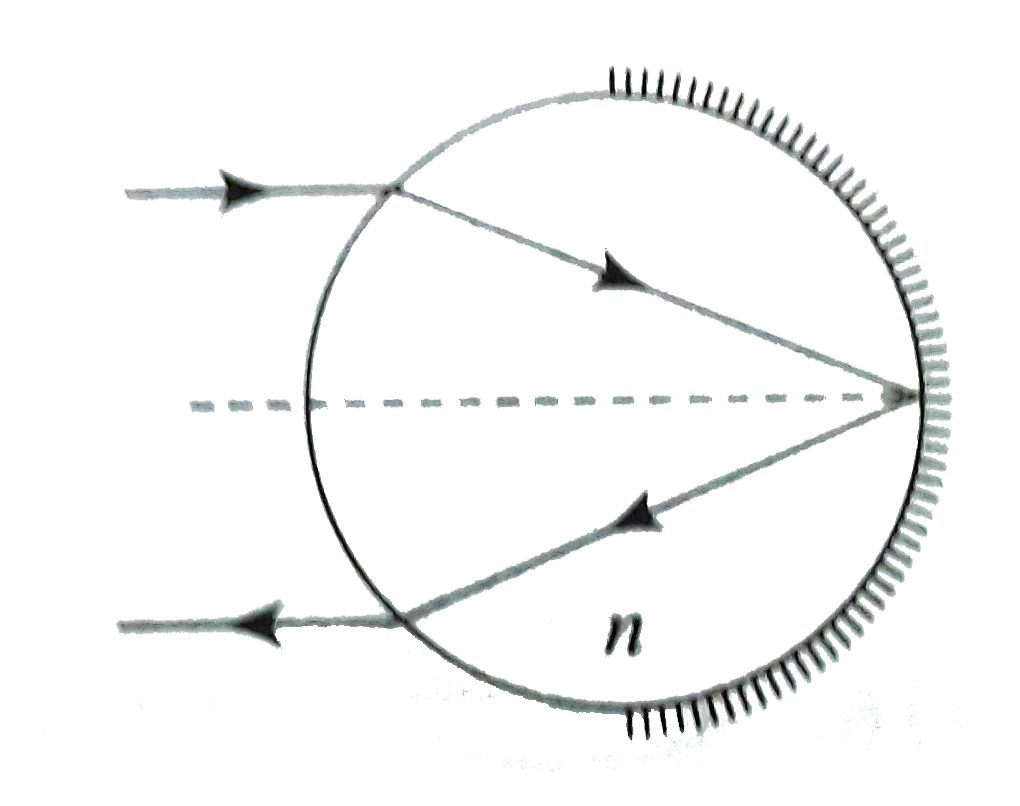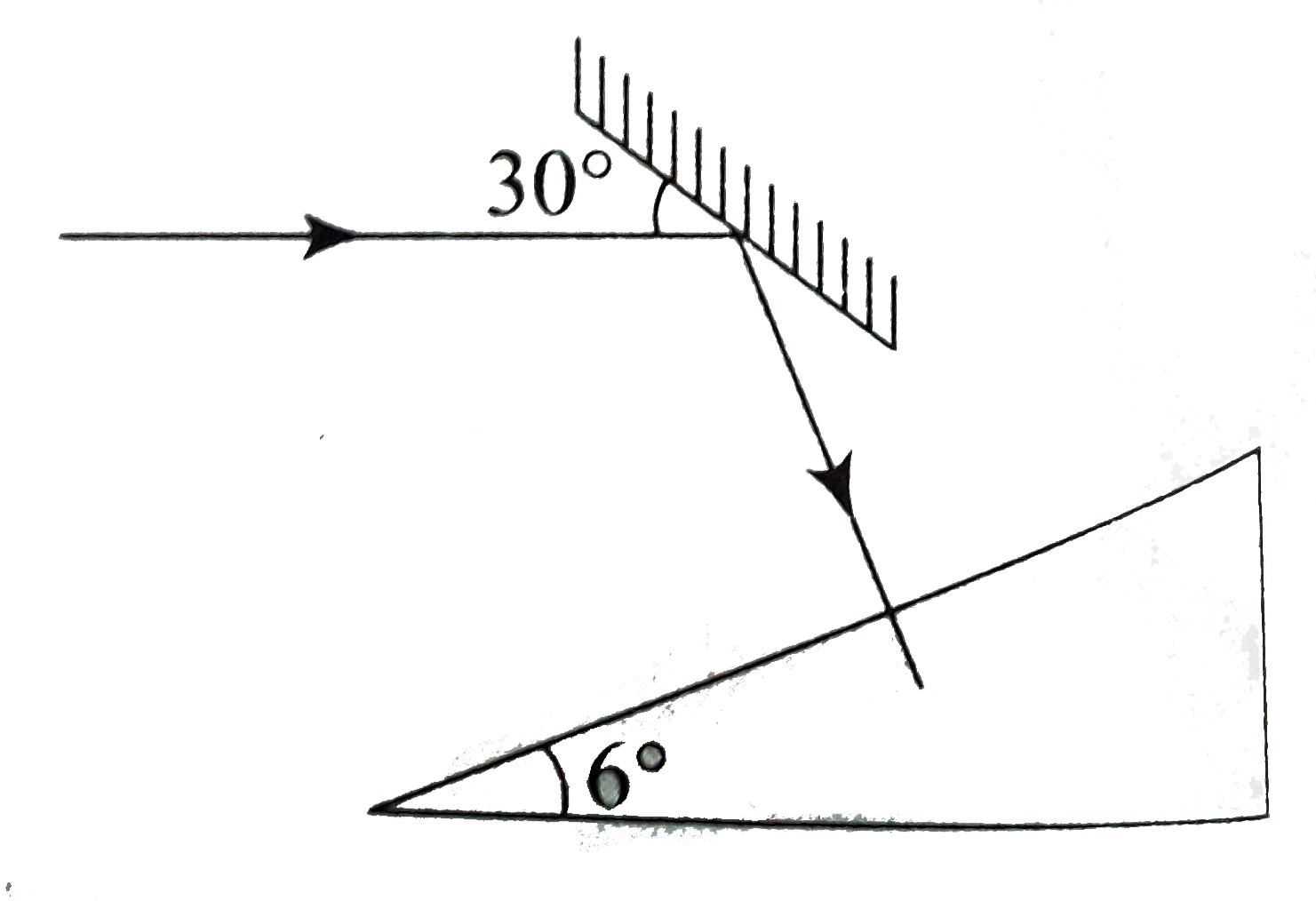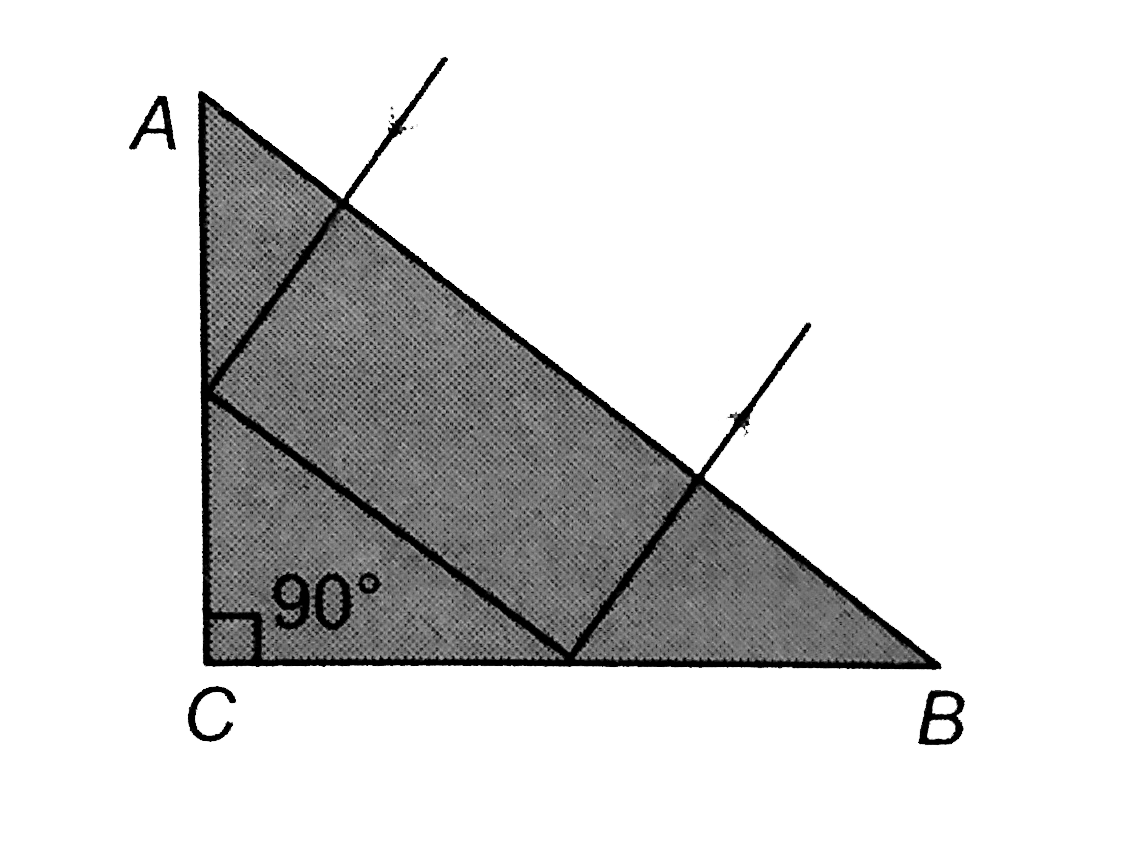A transparent cylinder has its right half polished so as to act as a mirror. A paraxial light ray inciden from left, that is parallel to the principal to the incident ray as shown. The refractive index n of the material of the cylinder is

1.2
1.5
1.8
2.0
The correct Answer is:D
For spherical surface
using n2v−n1u=n2−n1R
⇒n2R−1∞=n−1R
⇒n=2n−2
⇒n=2
Topper's Solved these Questions
Similar Questions
A ray of light incident at an angle 90° with the face of an equilateral prism passes symmetrically. Calculate the refractive index of the material of the prism
View SolutionFind the angle of deviation suffered by the light ray shown in figure. The refractive index μ=2.0 for the prism material.
View SolutionFind the net deviation produced in the incident ray for the optical instrument shown in figure. (Take refractive index of the prism material as 2.)

View SolutionWhen a ray of light is incident normally on one refracting surface of an equilateral prism (Refractive index of the material of the prism =1.5
View SolutionThe angle of minimum deviation for an incident ligt ray on an equillateral prism is equal to its refracting angle. The refractive index of its material is
View SolutionA ray of light falls on a right angled prism ABC (AB=BC) and travels as shown in figure. What is the refractive index of material of the prism ?

View SolutionWhen a ray of light is incident normally on one refracting surface of an equilateral prism (Refractive index of the material of the prism =1.5)
View SolutionOne of the refracting surfaces of a prism of angle of 30∘ is silvered. A ray of light incident at an angle of 60∘ retraces its path. The refractive index of the material of prism is
View SolutionFor a ray of light refracted through a prism of angle 60∘, the angle of incidence is equal to the angle of emergence, each equal to 45∘. Find the refractive index of the material of the prism.
View SolutionA ray of light incident normally on an isosceles right angled prism travels as shown in the figure. The least value of the refractive index of the prism must be

View Solution
